FS S5860-48SC Power Consumption and Noise
In terms of power consumption, we again want to mention the power supplies. Most hot-swappable PSUs we see in this class of switch are at least 80Plus Gold, but most are Platinum rated or better. Here we do not have those efficiency markings.
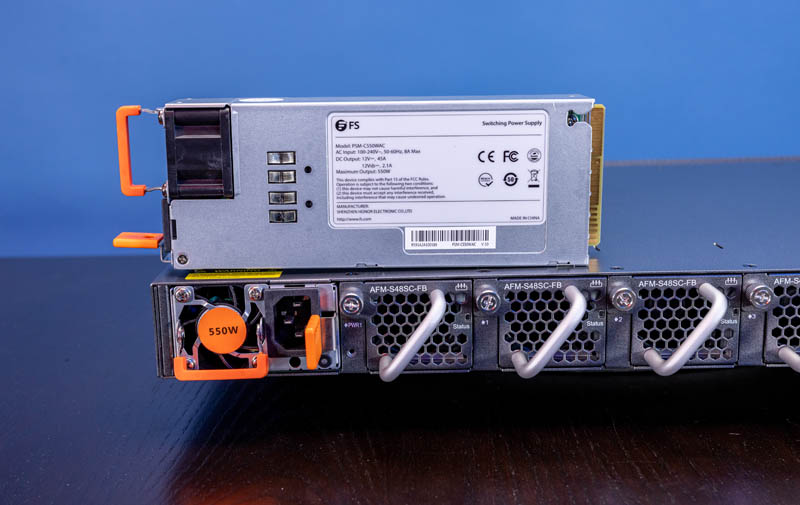
The power consumption of the switch was around 130W when the switch was completely idle, but it scales with the number and type of optics as well as how much traffic is being passed. For example, the SFP-10G-T modules that convert SFP+ to RJ45 for 10Gbase-T use 2-2.3W each. That is in line or lower than with other modules we have seen. Still, we can easily see how this switch will use 200-300W or more when fully populated with modules.
Some of our readers ask if these 10G switches can be used in a SMB equipment closet or in an office rack. This switch idled above 40dba for us without modules and FS’s specs say it can hit almost 80dba. Our recommendation is that this should be used in a datacenter or alongside other noisy rackmount gear. That is the target segment for this switch, but do not expect that it is low noise so you would want it in a quiet office environment.
Final Words
There are several different angles from which we can view the S5860-48SC. The switch itself is a 48-port SFP+ and 8-port QSFP28 switch. As such, it covers a fairly wide range of applications. This switch can easily handle a rack or more of servers with plenty of uplink bandwidth. Alternatively, if you have an environment with 1-2 racks of servers with a few high-speed storage or virtualization hosts, then perhaps even a pair of these would make a good option.
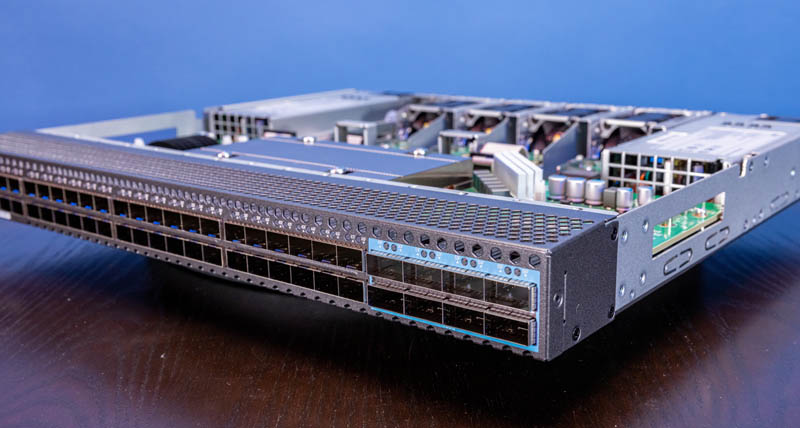
There are some caveats though. One is simply that in 2022, a lot of organizations are deploying 25GbE as that technology has become very mature. This switch using the Broadcom Trident3 25GbE configuration would be quite intriguing.
The management is currently limited to FS.com’s solution. Seeing a web management interface would have been shocking if we had not seen it on the last FS switch we reviewed almost a year ago. Most of our users will likely just head to the CLI, but the fact that there is a web management interface makes things more interesting in terms of encroaching on features normally seen more on the SMB side. There is value to bringing that kind of feature to other switch segments.
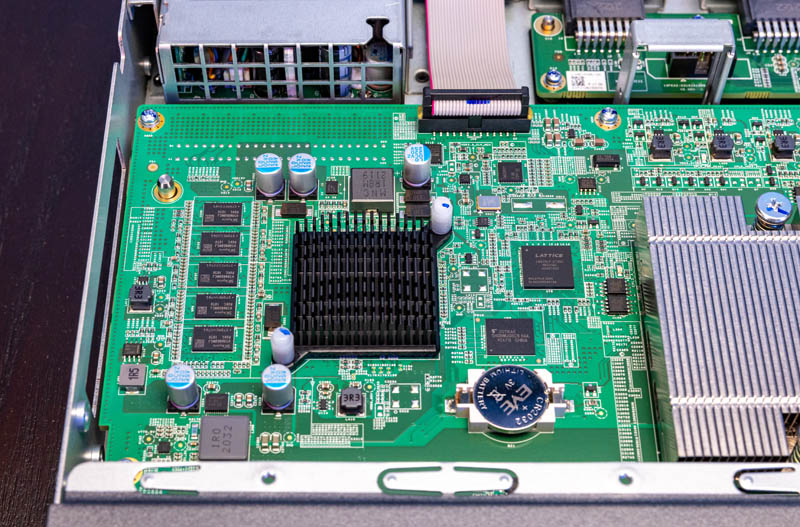
The switch itself seems like it is not locked to pluggable modules, but FS started with these modules so it makes a lot of low-cost options. It is also fairly easy to get these optics and even the SFP+ to 10Gbase-T unit to do a lot in terms of customizing this switch.
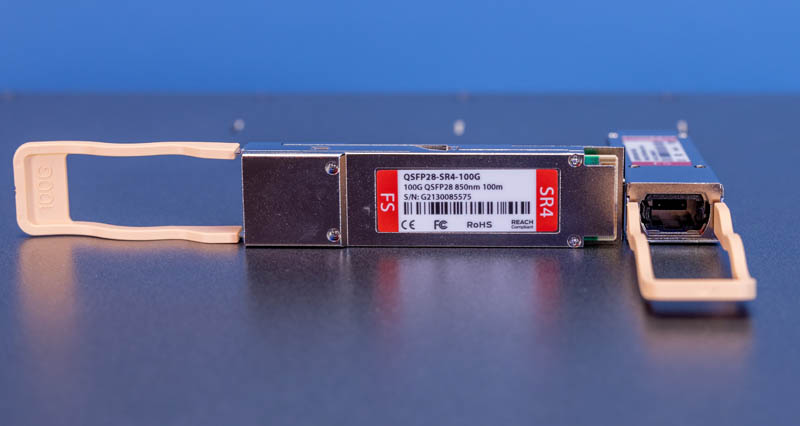
Beyond the customization is just the economics. Assuming you do not need the higher-end feature sets of the N5860 version that adds features like VXLAN, then the S5860 is around 18% less expensive than the other similar FS switch. Beyond FS though, the low-cost switch (currently just under $4000) and optics make this a switch that can potentially save thousands over offerings from traditional vendors. Many in the industry are talking about Cisco and Arista having huge lead times for switches, so there is something to be said that you can actually buy this switch online today. With that availability, is also a lower cost which for some will be an added benefit.
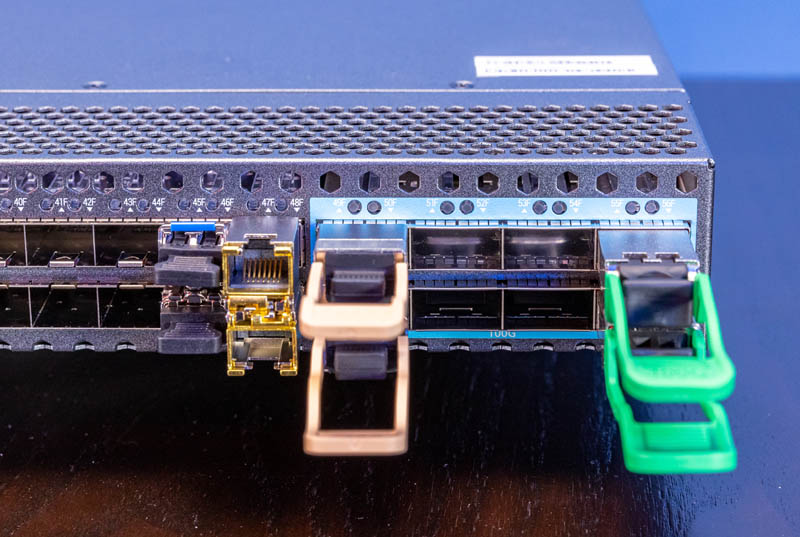
At the end of this review, there are a few points that I think we can take away. First, this switch is based on a quality Broadcom chip, not a lower-cost fringe vendor which is great. The features and management are something that we are going to suggest our readers dive into if they are looking at this switch. For our labs, the lack of VXLAN would mean we need to go up a model to the N5860 in this line. Likewise, there are organizations that are very brand-specific and want things like onsite service or the ability to plug into existing management, monitoring, and control infrastructure.
Also, these are not the highest volume switches out there, one can tell from all of the 5-star reviews mentioning swappable fans and power supplies and a lack of people reporting issues. Part of the value of a Cisco, Arista, Juniper, or other traditional switch vendors is that bugs are found and (sometimes) fixed based on this user feedback. Every switch has some bug. The Broadcom Trident3 is widely adopted, but it is not perfect. There is a huge value in the communities supporting switch ecosystems.
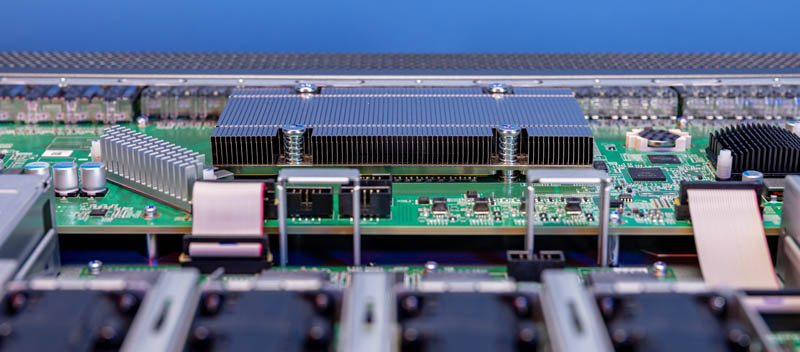
At the same time, let us just get to the big feature, and that is price. The reason you purchase this switch is that you do not want to purchase a used switch and instead want to save many thousands of dollars on the switch and optics. For some, this mix of SFP+ and QSFP28 ports is going to be perfect, and saving a large amount of money in the process is going to be the right decision. For others, simply being able to get a switch like this sent via FedEx overnight is a selling point given the industry supply chain issues in 2020-2022.
Hopefully, this review will give you a better idea of what the S5860-48SC offers, and what FS is trying to accomplish with this switch series in the market.

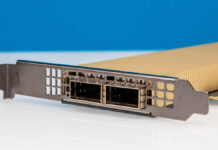
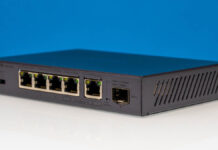
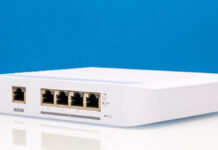
FS S5860=Ruijie Networks S6120
You’re totally right. You don’t see anything about these switches other than fake reviews and SEO websites saying they’re great. Do more of them STH. I always want to know if they’re good, but all these fake reviews and testimonials they do makes me think that they’re not.
Like there’s “N***a from Spain” on 12/26/2021, when people in Spain are off for Christmas holiday, and they say “The price of S5860-48SC is attractive compared to other brands. All the functions such as QoS, BGP, ACL, VRRP, etc. look good to me. Importantly, its 100G ports can play an important role in the data center.” Anyone that knows networking would call out MLAG being missing, VXLAN missing and so on so you know that’s fake.
As of now there’s 18 reviews and they all look fake.
Maybe that works in some places, but it doesn’t work in Europe or NA. It just turns me off. I also won’t buy Ubiquiti because they censor so much on forums. If FS reads this, stop spamming the Internet with fake reviews and people will trust you more.
I bought a 24 port S5850 a few months ago to get me going on a storage project in our data center. Our Dell S5248-ON switches were back ordered until at least March and possibly longer. While it took me a little while to learn the CLI commands (we mostly use Pro Curve), once I got everything working, it’s been fine. Having the flexibility to use our existing HP/Aruba or Dell optics and DACs has been quite nice.
Yes, there are some silly mis spellings in the web gui, but once I figured out the CLI commands I never have ventured back into the GUI anyways.
The reviews are definitively fake. I do not understand why they are doing this, as they products are actually decent as long as it fits your use case.
The issue with this one is power usage, 130W in idle, is a bit ridiculous.
Also lack of ONIE is a real problem long term I think